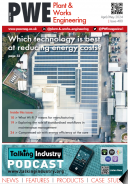Scientific confusions
Published: 01 January, 1990
There are a multitude of chemical compounds that can cause adverse effects on unprotected skin, from simple dermatitis to a complex variety of toxic effects. European CE categories for protective clothing differ in terms of risks and certification requirements - the higher the risk, the higher certification requirements are. A CE mark on its own symbolizes that the garment is Category I ("Simple design, minor risk”), the lowest level of protection for Personal Protection Equipment (PPE); whereas framework Directive 89/686/CE stipulates that equipment used to protect against chemical and biological agents must be certified as Category III PPE which protects against serious or irreversible hazards. The CE-mark plus a four-digit code of the notified body stands for protective clothing of Category III, i.e. “complex design, high risk”. To carry the CE mark, Category III Chemical Protective Clothing must pass one or more of the garment “Type” tests, meet or exceed minimum requirements for the fabrics' physical and chemical properties and be correctly identified and labelled. In addition, the protective clothing must be manufactured to a consistent quality, and the manufacturer must either hold a quality certificate, such as ISO 9000, or be subject to regular inspection by the notified body.
The Selection Process
Unsurprisingly, there are often elements of uncertainty when it comes to choosing protective suits. Unfortunately the specifications are often littered with scientific terms that users are unable to put into practical context.
In addition to protection level, other factors should be taken into account include:
- The compatibility of the suit with other forms of personal protective equipment, e.g. respiratory apparatus, gloves, boots etc
- Barrier protection (penetration and permeation.)
- Resistance (garment robustness.)
- Quality (of the garment material, zipper, seams, comfort, size and fit etc.)
- Convenience (garments should be user-friendly.)
- Environmental compatibility (disposal should be safe and cost-effective)
- Cost (although it is not recommended to make a decision based solely on price.)
- Tests and utilisation (Once a garment has been analyzed and it meets the necessary requirements, it is advisable to perform an in-use test under real working conditions.)
- Size (Choosing the wrong size can have fatal consequences. If the suit is too big it will get caught or get stuck in production machinery. A suit that is too small can tear or considerably restrict mobility.)
Donning and Doffing
The size, type and integrity of a suit should always be checked before use. A chemical-proof protective suit must be put on (donned) and removed (doffed) in the right way. Certain rules have to be followed to minimize risk of harmful substances transferring to hair, skin and clothing on removal of protective suits, and potentially compromising the safety of the wearer and/or their colleagues and family after they have left the “danger zone”.
For best practice, a contamination-free changing room should be made available in which to “don” protective clothing and equipment, and another to “doff” and dispose of contaminated garments and equipment.
Donning: Footwear should preferably be removed before the protective coverall is put on to reduce risk of damage to the coverall and potential contamination from shoes/boots. All objects that could obstruct work should be removed from jacket and trouser pockets and it is recommended in many cases that all gaps and joins should be sealed with adhesive tape when the suit has been donned (eg when respirators, gloves and glove cones are worn). A colleague should be present to check that the suit is donned correctly and that all gaps are sealed. Before entering the hazardous area, the worker should extend their arms sideways and above their head and squat down to ensure that all PPE will stay in place and that the suit fits properly.
Doffing: When the nature of the hazardous substance and/or level of contamination requires the decontamination of protective clothing before its removal, gloves and boots first should be cleaned first in order to prevent dust being thrown up, and protective clothing should be wiped clean or sprayed down with warm water. It is often necessary for the decontamination/doffing procedure to be assisted by a colleague dressed in the appropriate protective clothing and equipment. Any contaminated items removed should be immediately disposed of in a chemical waste container provided for this purpose. When removing the protective suit, it should be made certain that it is only held by the non-contaminated inner surface in order to prevent contact with the hazardous substance. The process of removing the suit usually results in contamination of the doffing area, which must also then be cleaned.
For further information please visit: www.dpp-europe.com
*Ian Samson is European training manager for DuPont






